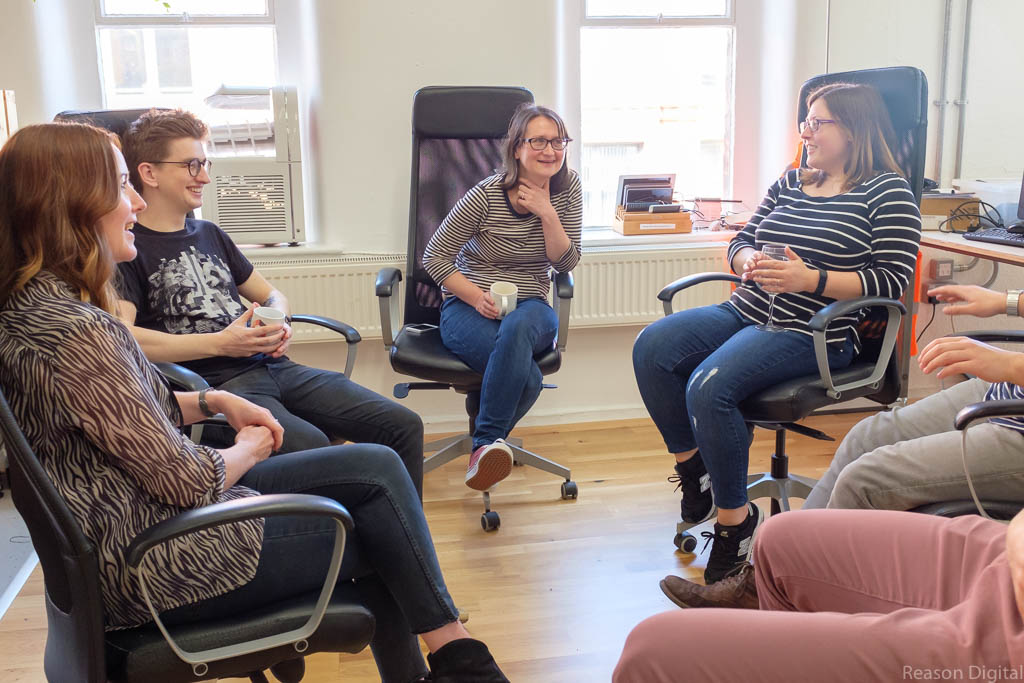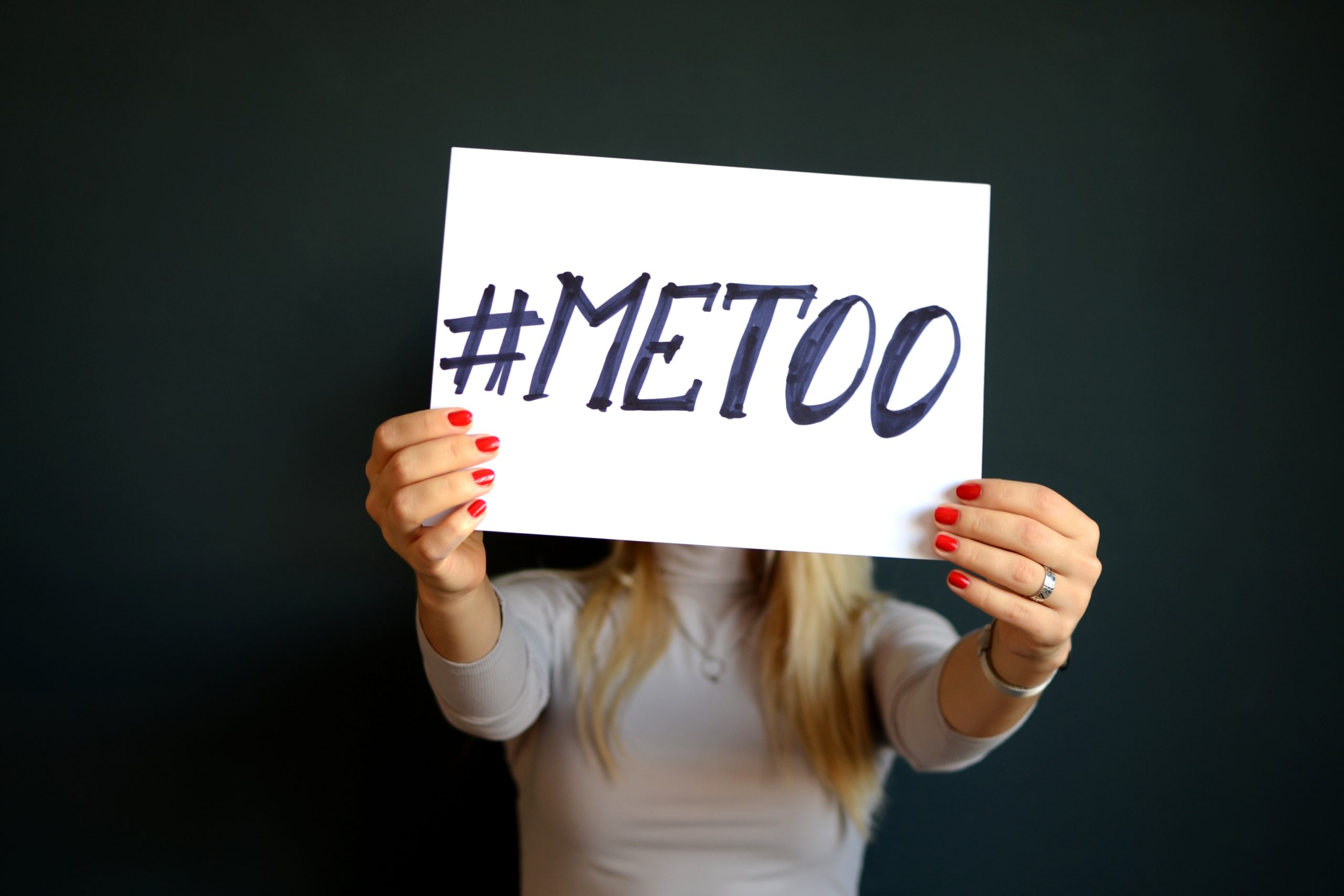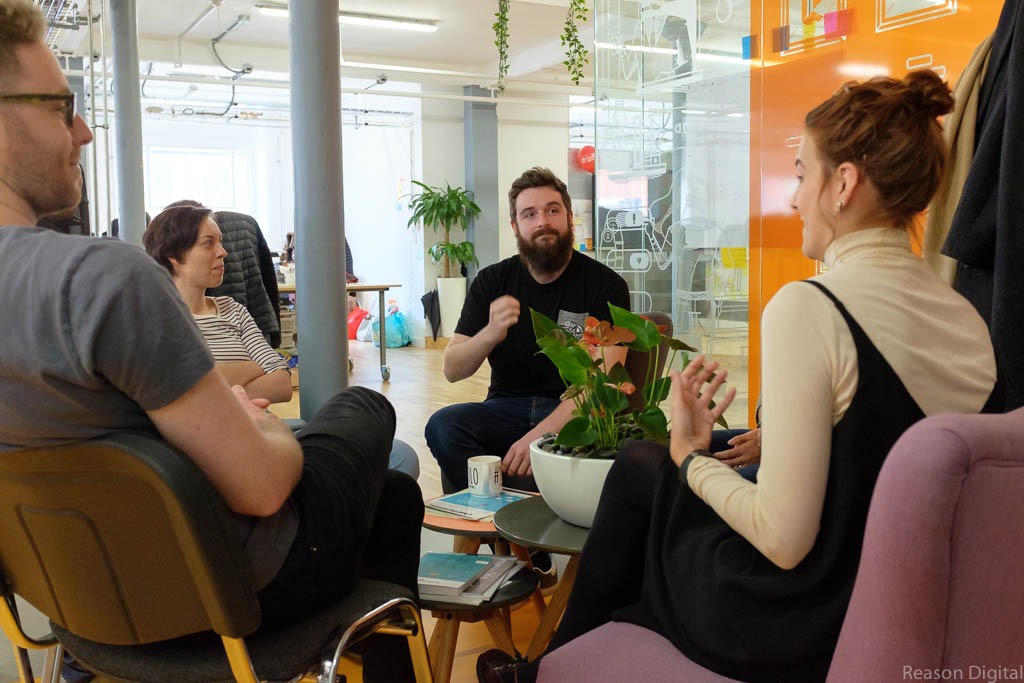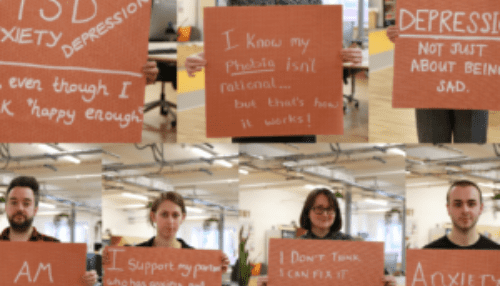Gender diversity and discrimination: how not to be part of the problem
Being a straight, white, middle-class guy is easy.
Of course, work can be difficult at times — we’ve all had challenging colleagues, tricky projects and frustrating days. But what doesn’t play a role in the difficulty in any of these things is my sexuality, my ethnicity, my background or my gender.
I’m in the fortunate — though seemingly logical — position of my work being judged on its content, rather than which demographic groups I belong to.
The majority of people are less fortunate.
Inequality
Despite improvements in gender diversity and inclusivity, there is a long way to go to achieve true equality, even in relatively well-regulated areas such as employment. So, whilst the improvement should be applauded, we must recognise where equality is lacking, and seek to address this.
- 47% of the working population is female, yet 35% of managerial positions are covered by women. Meanwhile, only 18% of Britain’s SMEs are majority women-led
- The median salary for women is roughly 22% lower than the median salary for men
- Men are paid more than women in 78% of the companies reporting their Gender Pay Gap
- 42% of women say they have faced discrimination on the job because of their gender
- 85% of women (and 80% of men) report that they have seen discriminatory behaviour in a professional environment
The UK ranks 25th globally on the Gender Inequality Index, a composite measure reflecting inequality in achievement between women and men in reproductive health, empowerment and the labour market. It’s striking that, even with the above stats reflecting a serious and persisting problem in the UK, it is still a situation so much better than elsewhere in the world.
Consider also that the interaction of demographic variables further reinforces inequality. Ultimately, issues such as racism, homophobia and classism are omitted here because a shoe-horned inclusion to this article on gender would only undermine the severity, enormity and uniqueness of their respective challenges that are already so difficult to fully capture and understand in their own right. Nevertheless, bear in mind that these inequalities do compound one another: of graduates working in London in 2016, white males earned on average £7,000 more than white females, and £15,000 more than black females. And, in the US, there are now no black, female CEOs in the Fortune 500.

However, even as a statistician, numbers can only do so much: we’re liable to become numb to a bombardment of faceless statistics such as these… so consider the personal stories that humanise the population-level patterns. Every story shared from the #MeToo movement, for example, highlighting the prevalence of sexual harassment and sexual assault — and there were a lot — is a lived experience, impossible to fully grapple with just by using figures and statistics.
Elsewhere online, there are countless collections of women’s real world experiences, and these lived inequalities. To select just a few…
“I was the only female partner on a consulting team bidding for some client work. And I was the only one who had significant experience and expertise in this particular situation. And yet my input was significantly ignored. When I showed my frustration I was publicly and privately chastised, and threatened with, ‘If you behave like this … I’m not sure you should be consulting to clients.’ This was 25 years into my consulting career.” – MEL

“Last week, I was giving a personal history, and the interviewer asked what I did. I told him I worked in advertising, and this guy looked at me and said, “Oh, in admin?” And I went, “No — actually, I run the joint.” LAURIE
“I’ve been criticized in annual reviews for being too assertive and told I need to have a gentler approach in my emails. My male coworkers are also assertive, but for them, it’s applauded and called ‘taking charge’ and ‘leadership’.” JENN
“I had a boss when I was in fundraising and development who suggested I should wear a ‘short skirt’ (i.e. dress provocatively) for a donor meeting to ensure we got the gift. I had another boss who called me and a colleague into his office to ask us to talk to another woman about her hair, which he thought needed to be ‘more attractive’.” JESSICA

“I’m still not used to the sexism. It can be as simple as not acknowledging you or talking to you in a meeting. I’ve sat in meeting rooms where ultra sexists jokes are being shared and they don’t even realise I am there to understand that it’s rude or else they don’t care.” JILLIAN
The bubble
Like I said, being a straight, white, middle-class guy is easy. From a personal perspective, one of the shocking aspects of reading these anecdotes is how invisible much of this is to me. Granted, I work for an organisation with a sincere commitment to diversity and a truly embedded culture of equality (and so I already exist within a lovely little liberal bubble) but it is striking to me how invisible — or maybe covert — many of the manifestations of inequality can be, especially when you are not a victim of that inequality.
Inequalities in the workplace — not just in the context of gender — are so often masked in routine, process, tradition or behind boardroom doors, that they can be both utterly pervasive and difficult to detect.
Gender inequality and a lack of gender diversity is an institutionalised problem: from socialisation as a child, through education and job application processes to employment and promotions. Inequality — and attitudes toward inequality — is shaped along social, cultural and experiential lines.
As noted in Forbes, “interviewers’ micro-behaviours and body language toward minority candidates during interviews — such as leaning less forward, maintaining less eye contact, being slightly less expressive or standing a little further away — can make interviewees a little less confident, putting them in a less-than-ideal position to show their best selves. Our unconscious biases are often manifested in such non-malicious ways and yet, still will have a major impact within your company and team.” Diversity, discrimination and equality are so often so subtle.
The Gender Pay Gap and the surfacing of sexual harassment via the #MeToo movement are two further ways in which this institutionalised inequality is realised; the result of a combination of societal factors borne out through individual choices and actions.

But, as the stories above show, inequality and discrimination takes many forms, some of which are less immediately visible. Talking over and interrupting colleagues, dismissing comments out-of-hand, taking credit for others’ ideas, unfairly providing or denying opportunities, engaging in (direct or indirect) discriminatory conversations, uninvited commenting on appearance or clothes… the list of ways in which inequalities can be experienced is practically endless.
And — here’s the crucial point — it is everybody’s responsibility to fight this.
Not being sexist is not enough, and not being senior within a company is not an excuse. Likewise, not being a woman does not mean you shouldn’t give a shit.
How not to be part of the problem
There are actions that anybody can take:
Be aware and self-aware.
Many of the most pervasive obstacles to diversity and inclusivity are the smallest and hardest to detect because they are so ingrained in our behaviours and thought processes. This might be talking over, ignoring or cutting-off some colleagues more freely than others, it might be mansplaining, or it might be something entirely (or seemingly) internal such as assuming somebody’s authority based on their gender. In any case, strive to be continually aware of your actions and your conscious and subconscious biases, checking them at each point.
Just as important is an awareness of others’ behaviours and a willingness to disrupt. If you are aware of gender bias taking place, it is everybody’s responsibility to challenge this. The systems which result in powerlessness for one group are the same as those which create powerfulness for another; institutional and personal sexism habitually silences women and, by that same mechanism, bestows men with social capital. But rather than sticking with the status quo, this social capital provides men with the opportunity to use their voice to help create positive change.
Speaking out against harmful behaviours — even ‘banter’ — feels small, but gender-biased micro-behaviours reinforce and perpetuate existing inequalities, and facilitate the continuation of a culture which prevents true diversity; you challenging the status quo is one of the most important actions you can take.
Get interested in diversity and inclusion.
The more you top-up your knowledge on the topic, the more enthused you’ll become, and the more informed you’ll become about the issue as a whole and the ways in which you can fight the good fight. Embedding yourself in the literature and the latest thinking on diversity will reinforce the importance of the issue, provide you with new ways to think about and tackle the problem and, importantly, reassure you that your actions aren’t just a drop in the ocean.
Some good places to start include:
- The Everyday Sexism Project: first hand accounts of women’s ‘everyday’ experiences.
- The Guardian’s sections on diversity and equality in business and opinion pieces on gender: reporting on the latest news on business, diversity and gender.
- Me Too Rising – an interactive data visualisation of the popularity of the #MeToo movement around the world.
- Gender Shrapnel in the Workplace: a US-based blog, discussing how gender and its intersectional categories of race, class, religion, sexual choices, and parental status operate in the workplace.
- Close the Gap works with policymakers, employers and employees in Scotland to influence and enable action to address the causes of women’s inequality at work. Also featuring a regularly updated blog.
- Set up a Google Alert for “gender equality” for the very latest relevant news.
- HeForShe’s YouTube channel featuring talks, speeches and other videos. HeForShe is a solidarity movement for gender equality, engaging men in supporting gender equality.
- Gender & Society: a peer-reviewed journal, focused on the study of gender in society across global and transnational spaces.
- Fawcett, a UK-based charity campaigning for gender equality and women’s rights, with a particular focus on employment and workplace inequality.
- Speak to people. Talking to women – or even to male ‘allies’ – helps to normalise the conversation about workplace diversity, and can help to make others feel more at ease about talking about their experiences. Crucially, it will also provide insight into the environment that you exist within, and potentially open your eyes to things that you otherwise wouldn’t see.

Make the case to management.
Whilst it may sometimes feel as though you can only do so much as an individual, you also have agency to affect and influence those in more powerful positions — most notably, your managers and board. Indeed, only 51% of managers say they know how to improve gender diversity.
Whilst ethics and common sense should ideally inform a company’s decision to pursue a more diverse and more equitable workforce, senior decisions are often made along economic lines. Thankfully, there’s ample evidence of gender (and other) diversity having tangible positive impacts on a company’s financial output: companies with diverse workforces are 22% more productive, with 39% higher customer satisfaction, whilst executive teams that incorporate gender diversity are 15% more profitable.
Indeed, the argument for leaning on senior members of your company to enact change is backed up by Sheryl Sandberg, CCO of Facebook, who advises organisations follow three steps:
- Learning to understand the business benefits of gender diversity
- Training managers to be aware of gender diversity when they hire
- Recognising that each company has its own unique set of challenges to achieve equality.

A further step that you could point management towards — and one that would directly help to address the third of Sandberg’s points — is conducting a thorough analysis of the more policy- and process-oriented aspects of your company’s current performance in gender diversity terms. The Women’s Empowerment Principles’ Gender Gap Analysis Tool (affiliated with the UN’s Sustainable Development Goals) is a great — and relatively straightforward — way to more clearly understand where your company is and isn’t currently performing, provides a score, and gives you guidance on how to improve that score.
You could also be instrumental in suggesting and setting up an inclusion group, seeking to address issues of diversity within the organisation, and ensuring a more cohesive voice to present to senior management. This is one strategy we’ve rolled out at Reason Digital with a view to identifying problems and creating solutions within the context of gender. Crucially, involvement should be voluntary, but sought from all employees, regardless of the demographic groups they belong to.
Update processes.
Although very dependent on your own company’s context and your own role within that company, it is worth thinking about the changes you — as an individual — can help to enact in the company more widely.
If, for example, you’ve noticed that there is a culture of women being ignored or interrupted in meetings, think about implementing a 2-minute timer for all speakers within meetings within which no interruptions can occur.
If there is a culture of inappropriate comments being made by staff about — or to — female colleagues, suggest the team goes on an unconscious bias course… or that members of staff read some of the resources shared above!
Implementing a mentoring scheme (or even a form of ‘reverse mentoring’) offers an outlet and a source of guidance and support for women within an organisation, and provides a means by which issues can be dealt with collaboratively, rather than individually. Some charities provide free mentoring programmes: at Reason Digital, some of our staff are participating in The Pankhurst Trust’s leadership coaching scheme.
If you work in HR and there is a chance that unconscious bias is occurring during recruitment (and it’s very unlikely that it’s not), consider a method of first filtering applicants without being exposed to their name or gender. When five of the US’s leading symphony orchestras started using ‘blind auditions’ (placing candidates behind screens), the number of women chosen to represent the orchestras increased 500%.
Crucially, it’s also worth implementing a system of capturing feedback from male and female colleagues, in order to understand what processes and changes are being adapted to well, and what may require further tweaking.
In summary
The implicit biases we carry with us are imprinted on our subconscious. That means that the prevailing social and cultural norms which we were socialised according to and now live within have a profound effect on the way that we think and ultimately behave. Even if we don’t — or are unable to — consciously perceive it, these biases exist and play a significant role in perpetuating the inequalities and lack of diversity which continue to shape opportunities and wellbeing, both at a population-level, and in the context of individual lives.
Recognising the role each of us plays in the perpetuation of these social norms is a crucial first step to addressing the problems that they create. As Sandberg says, “It’s hard to solve a problem we don’t fully see or understand — and when it comes to gender in the workplace, too often we miss the scope and scale of the issue.” But recognising these issues is not enough: silence is complicity.
It is the responsibility of those for whom discrimination and lack of diversity is not a ‘personal’ issue to add their voices and change their actions to support those in positions of less power. That is not to say that our voices should replace those we’re seeking to fight for — there’s enough of that already — but rather should complement the voices of those who are experiencing the inequalities. If, like me, your demographic tick-boxes leave you in the fortunate position of never having to worry about whether you will be considered for a job, listened to in a meeting, or harassed in the workplace due to your gender (or ethnicity, or sexuality, or background), you’re in a position to add your weight to the argument, and use your influence for good.
More inspiration this way...
-

Domestic abuse – Is technology part of the problem or solution?
If you need urgent help related to domestic abuse please call the National Domestic Abuse Helpline on 0808 2000 247
Find out more
-

Let’s talk about mental health | Part 1
I sat down with some of our team to talk openly about mental health.
Find out more
-

Students, social media and surviving cancer
In the following 15 minute read, Head of Marketing, Emma interviewed four young people who have had cancer. They discuss social media and how their journeys were impacted by the never-sleeping bustle of digital friendships and followers.
Find out more



